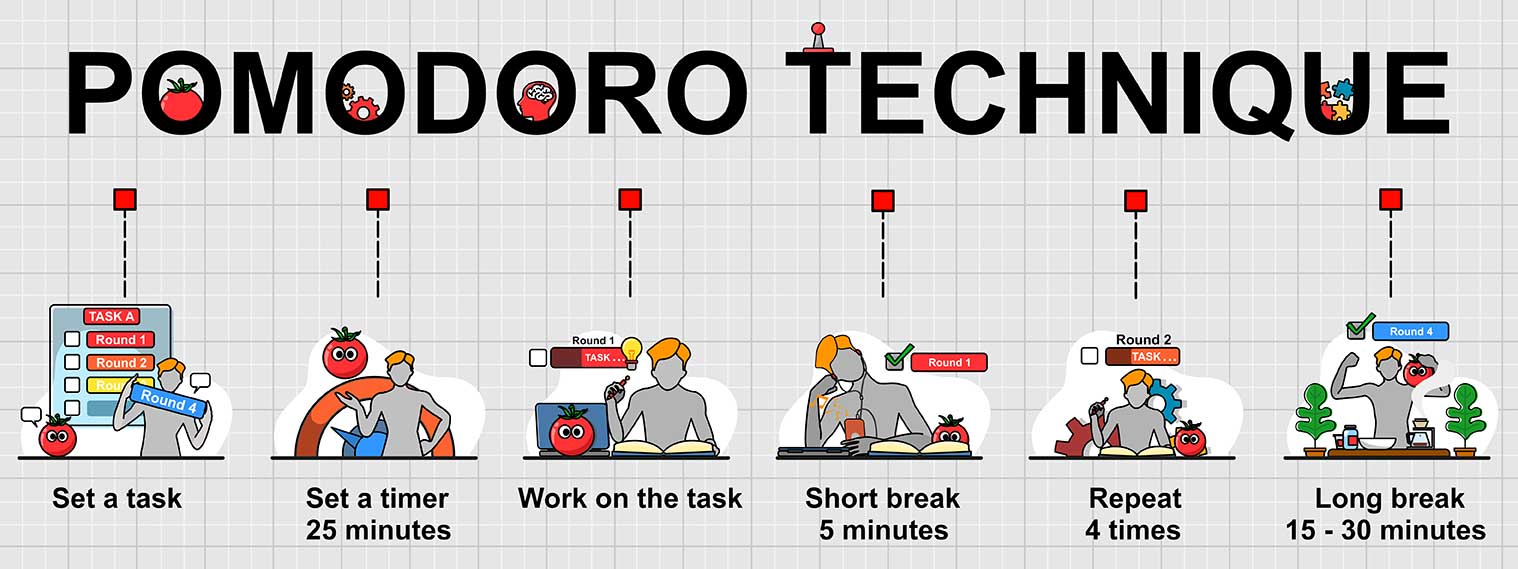Pomodoro Technique: How to maximize Time Efficiency & Increase Productivity
Written by Kerstin Lakits, Jan 25, 2024
Are you oftentimes distracted whenever you sit down to study? Your phone rings, messages pop up, Instagram and TikTok catch your attention, your flatmates interrupt you or you think of thousands of items on your to do list. Each interruption reduces your productivity, and you are chained to your desk. In this case, the Pomodoro Technique is a magic bullet that is extremely popular with students and workers. The Pomodoro Method has proven its success and is easy to apply. In this article, we will present this study technique and give you practical tips! Are you ready to be more productive than ever? Let’s go!
Table of content:
- Definition: What is the Pomodoro Technique?
- Executing the Pomodoro Technique: How is it Applied?
- Advantages of the Pomodoro Technique: Efficiency and Productivity in Focus
- Disadvantages of the Pomodoro Technique: Critical Considerations
- Mastering the Pomodoro Technique: Tips for Successful Implementation
- Pomodoro Timer: These Tools Assist You with the Pomodoro Technique
- General Tips and Strategies for Productive Learning and Work
- Structured Learning and Work: Who Benefits from the Pomodoro Technique?
- Alternatives to Pomodoro: Enhancing Efficiency with Flexible Strategies
- Conclusion: The Pomodoro Technique as a Recipe for Successful Time Management






